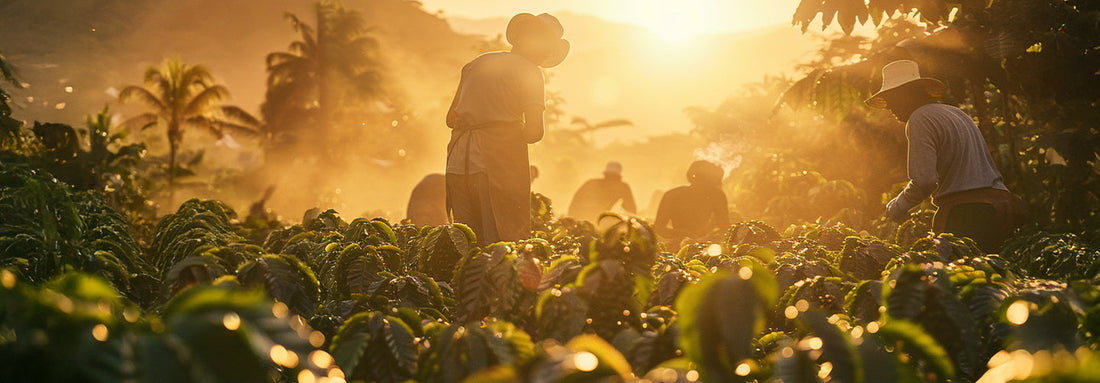
Single-Origin Coffee: What It Means and Why It Matters
Coffee isn't just a beverage; it's a story in a cup. And for those who seek more than just caffeine, single-origin coffee is the gateway to flavor, craftsmanship, and connection. But what exactly does "single origin" mean, and why are so many coffee lovers and connoisseurs drawn to it?
Let’s explore the rich world of single-origin coffee and understand why it has become a hallmark of quality in the specialty coffee scene.
What Is Single-Origin Coffee?
At its simplest, single-origin coffee refers to beans that come from a specific geographic
location. This could be:
● A single country, such as Ethiopia, Colombia, or Kenya
● A region within a country, like Sidamo in Ethiopia or Huila in Colombia
● A specific farm or estate
● Even a microlot, representing a small portion of a single farm
This contrasts with blended coffee, which combines beans from multiple origins to create a consistent taste profile.
Why Single-Origin Matters
1. Traceability and Transparency
With single-origin coffee, you know exactly where your beans come from. From altitude and soil to climate and farming practices, this traceability offers:
● Greater transparency for consumers
● Ethical sourcing opportunities
● Closer ties between roasters and farmers
When a roaster can tell you the name of the farmer and the altitude at which the beans were grown, you're no longer drinking coffee; your part of its journey.
2. Distinctive Flavor Profiles
Single-origin coffees are celebrated for their unique flavor characteristics that reflect them
environment, commonly referred to as terroir. For example:
● Ethiopian Yirgacheffe, floral, tea-like, and citrusy
● Guatemalan Antigua, chocolatey, nutty, and full-bodied
● Colombian Huila, juicy, balanced, with notes of red fruit
Because the beans aren't mixed with others, their natural nuances shine through. This makes
single-origin ideal for black coffee, pour-overs, and cupping sessions where purity of taste
matters most.
3. Seasonality and Freshness
Single-origin coffees are often harvested seasonally, which means you're drinking beans at their peak. Unlike commodity coffee, which may sit in warehouses or be blended to mask
staleness, many single-origin roasts are:
● Freshly harvested
● Roasted in small batches
● Sold in limited releases
This promotes a fresh-to-cup experience, much like seasonal fruits or fine wine.
4. Ethical and Sustainable Practices
Many single-origin coffees are sourced through direct trade or fair-trade partnerships,
allowing:
● Farmers to earn better prices
● Roasters to build long-term relationships
● Communities to invest in sustainable agriculture
In other words, single origin isn’t just about flavor, it’s about fairness and future impact.
How to Brew and Enjoy Single-Origin Coffee
To truly experience the character of a single-origin bean:
● Choose the right brewing method, pour-over, Chemex, or French Press often highlight
subtle notes better than espresso or drip.
● Grind fresh, use a burr grinder and adjust grind size to your brew method.
● Use filtered water; coffee is 98% water, so the quality matters.
● Mind your ratios and temperature, aim for a 1:16 coffee-to-water ratio and 195–205°F
water.
This attention to detail helps unlock the full personality of the bean, whether it’s bright and fruity or dark and syrupy.
Is Single-Origin Coffee Worth It?
Absolutely, if you’re looking for more than just caffeine. Single-origin coffee invites you to
slow down, appreciate quality, and explore the diversity the world of coffee has to offer.
It’s not just a drink, it’s a destination.
Final Sip
In a world of fast-paced blends and convenience, single-origin coffee stands as a return to
authenticity. It reminds us that great coffee has roots, geographic, cultural, and human. So, the next time you sip a cup labeled “single origin,” take a moment to taste the altitude, the soil, the sun, and the soul of the land it came from. Because in that cup lies not just flavor, but story.





